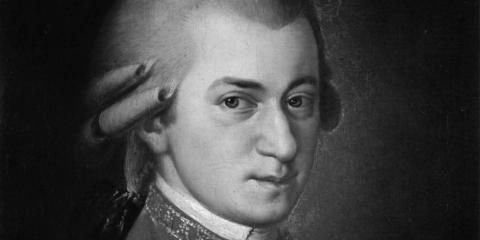MCO’s The Great Divertimento can be heard via live stream on Thursday 5 November at Melbourne Digital Concert Hall.
Wolfgang Amadeus Mozart
Divertimento in E flat major K563
Allegro
Adagio
Allegro: Menuetto – Trio
Andante
Allegretto: Menuetto – Trio I – Trio II
Allegro
Early in 1788 Wolfgang Amadeus Mozart (1756–1791) completed the Piano Concerto in D (K537); from June to August he wrote the Piano Sonata in C (K545), the three piano trios (K542, 548 & 564), and his final three symphonies 39, 40 and 41 (K548, 550 & 551). The work that is featured in this program, the Divertimento in E flat K563 for violin, viola and cello, was completed in September.
The work has the title Ein Divertimento … di sei pezzi (of six pieces). Interestingly, despite Mozart’s nomenclature, Grove Music Online lists this work in the category of “String sonatas, duos, trios” and not “Cassations, serenades, divertimentos, miscellaneous works”. Perhaps this was to imply the significance of the chamber work as having more ‘weight’ or import than a traditional divertimento. It is Mozart’s longest chamber composition and was written for Michael Puchberg, a good friend of the composer, and was premiered in Dresden in April 1789.
The opening Allegro is in sonata form. The development of the two main themes features brilliant passagework passed among the three instruments, producing some remarkable changes in texture. The beautifully lyrical Adagio that follows is also in sonata form, and the sonorous nocturnal quality of this movement is one of sheer elegance.
The Allegro Menuetto – Trio is a lively and energetic contrasting movement distinguished by its cross-rhythms. Like the opening movement, the materials are shared equally around the three instruments. The Andante is a relatively simple song-like theme with a series of variations that gradually develop in contrapuntal invention and display.
The second Menuetto (Allegretto), which features two contrasting trios, is gracious and courtly in character. The final Allegro is a rondo, the main theme of which corresponds in character to the finales of the later Piano Concerto K 595 and the Clarinet Concerto K 622. The movement is packed with rhythmic and contrapuntal devices that take the work to a spirited end.
David Forrest

